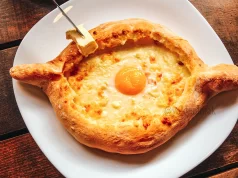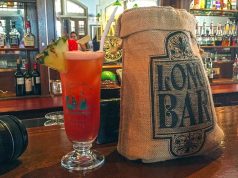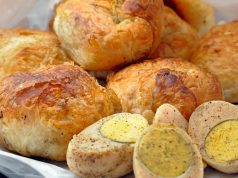New country, new food, I eat! China is of course famous around the world for its cuisine, but honestly, until you come here it is hard to comprehend the amount of food available to eat.
As usual when I travel, I had a plan. Yes of course I had a plan for food! I am a woman – watching my weight is important to me. And I knew from my previous visit to China in 2005 that the food was good here. Good food is not always good for the waistline. So my plan was when I got settled into my apartment that I would cook my own food every day, just like I do when I’m in New Zealand.
The people who organised the trip for me somewhat mistakenly decided that I would be more comfortable living in a hotel than in an apartment. That left me with no option to cook. Every day for the past four months I have eaten lunch and dinner in a restaurant. I think I have forgotten how to cook.
Actually, the food is so cheap here, that eating in restaurants is not a bad choice. And Wudaokou, the area of Beijing in which I live, is particularly cheap as it is full of university students who don’t have the money to choose more expensive restaurants. I would probably have spent more money buying food items in the supermarket than by eating every day in some of the cheap student places. To give you an idea of the cost, most of the dishes I am going to present cost less than 30 RMB (6NZD/8.7TL), often much, much less than this.
You may ask: did I get sick of eating in restaurants? Well, no but sometimes the sheer volume of choice made it confusing to decide each day where to eat. There are enough eating places in the neighbourhood to try a different one each day and still be able to go somewhere new after a month.
I did worry about putting on weight. Chinese food includes lots of vegetable options, but uses much more oil in cooking than I am used to. My solution was quite simple. Stop eating snacks, and eat enough food at meal times to last until the next meal. It seems to have worked. And because ice cream is nowhere near as good as New Zealand ice cream and chocolate is mostly imported and therefore expensive, I generally ate quite wholesome and healthy food despite the oil.
Now for the good stuff: the food. What I have included is only a small sample of some of the delicious dishes I have eaten here. Some food was so delicious I completely forgot another one of my plans: photograph as much food as possible while I am here. Even so, when I looked at my photos as I began to put this article together, I was amazed at how many food pictures I had.
As much as I can remember I will explain each dish, the ingredients and taste, where it originates from and how much it cost. Often I don’t know the Chinese name, and just give it a description. There’s no particular order or preference given, but some of the dishes are favourites.
Pancake Soup

This one surprised me: Soups in Asia usually have noodles in them so the concept of cutting up a heavy pancake and putting it into soup seemed a strange one to me. But it was very tasty! The soup itself was a spicy chicken flavour, with added chilli, chicken pieces, cabbage and grated carrot. The pancake pieces are very filling and I couldn’t eat all of it. I bought this at the Beijing Language and Culture University student food hall. It cost 8 RMB (1.50NZD/2.17TL).
Hot Pot

This dish is quite well known internationally and is a popular dish in China, especially in the north. Each area has its own hot pot speciality. Basically, the food is boiled in the hot pot then dipped in a sauce and eaten. The sauce that is popular around Beijing is sesame flavoured. Some restaurants use a gas flame to heat the water, but this particular restaurant used a more traditional method.
In the centre of the hot pot are live coals. You have to be fast as eventually the coals will burn out (they can be replaced though). The food is always thin slices of meat (to ensure proper cooking), and most kinds of vegetable. Cabbage and mushrooms are the main choices, although thinly sliced potato is also common.
You can choose what food you want to cook and the price depends on which foods you select from the menu. Hot pot is best eaten in a group as it is too expensive for a single person to eat by themselves. On average you can expect to pay between 30 to 50 RMB (6 to 10NZD/8.7 to 14.50TL) per person.
Dumplings

Of course, these ones are really famous around the world! Usually people eat them boiled, but the photo I have included is of a particular dumpling called open or triangle dumplings, which are fried. The normal variety can also be fried. I love them! The main fillings are usually beef, chicken or pork, with a vegetable included.
The ones in the picture have coriander and corn. You can eat them on their own or dip them in sauce – usually vinegar or soy, with chilli paste and garlic added for extra flavour. The pictured dumplings are a little expensive, but worth it (18RMB for 15 dumplings – 3.60NZD/5.22TL). Boiled dumplings are usually less: 10 RMB for about 20 as they are also smaller.
Baozi (Steamed Buns) with Congee (Rice or Millet porridge)

This was my breakfast every day for three months until I moved to a different hotel. Baozi are mostly eaten at breakfast or lunch time, but can be eaten as a snack at any time of the day. Baozi are made of heavy white bread dough which is steamed in a bamboo container. Inside can be either meat or vegetables.
They are a good choice for vegetarians. Like dumplings you can eat them by themselves or dip them in a soy or vinegar sauce. They are cheap, around 10 RMB for 6-7 baozi.
Another very traditional breakfast item is congee. I don’t like it as it is basically rice or millet in a very watery porridge. It is quite tasteless unless meat broth is added. It is very healthy and very filling though, so it is easy to understand why it has been a meal for the common Chinese person for a long time. Congee is cheap: 2RMB for a bowl, about 60 cents in NZD, or 0.87TL.
BBQ Skewers


For 10RMB you can get about 20 of these little skewers. They are extremely popular with students (who often have them with beer) and are cooked outside on charcoal braziers on the footpath or in car parks. My students just called them BBQ – I don’t know them as anything else. They are run privately, but in collaboration with nearby restaurants.
You can order your food in the restaurant and then order BBQ from outside and the vendor will bring it into the restaurant for you. It’s always just meat – I’ve never seen them with added vegetables.
Xi’an Snack

I don’t know what to call this, other than to say it comes from the city of Xi’an and is more of a snack than a meal. It’s a toasted bread bun with a spicy lamb filling. I really like it. It costs between 5 to 10 RMB (2NZD/4.35 TL), depending on which restaurant I buy it from.
Noodle Soup

Do you want rice or noodles, Teacher? I am asked this almost every day by my students. ‘Noodles’ usually means noodle soup, and there is an enormous variety available. My favourite one is the one in the picture. It’s hard to see, but the noodles are a special kind of noodle made out of soy.
The soy is pressed into very hard dough and flattened on a wooden board. The chef picks up the wooden board, holds one end under his/her chin and using a tool like a vegetable peeler, grates long slices of the dough into hot water where they are cooked very quickly. The noodle is long, flat and about 2 cm wide.
The soup is lamb based and includes garlic, mushrooms and Chinese cabbage. Delicious! Noodle soup usually costs around 10 RMB (2NZD/4.35 TL).
Dry Noodles

The noodles in this picture are made exactly the same way as I described for the noodle soup in the part above this one. The main difference is that they are fried on a hot plate instead of boiled. This particular dish has onion, cabbage and chicken.
It’s a little bland, so it is usual to add either chilli sauce, soy sauce or both. It costs 8 RMB (1.60NZD/3.48 TL). There are of course many other types of dry noodle dishes that use wheat flour noodles, egg noodles and rice noodles to name a few.
Pancake Snack

A Chinese variety of fast food, this is a special kind of pancake made from thick, sticky dough. It’s cooked on a hotplate then your choice of filling is added onto a lettuce base. Fillings include tuna, bacon, egg, sausage and cheese. It’s finished with either tomato ketchup or mayonnaise. This is a popular choice for breakfast or lunch as it is made quite quickly. It isn’t the healthiest dish I’ve eaten here though. I usually choose egg, which costs 4.5 RMB. (1NZD/2.17TL)
Donkey
Yes, that’s right. You read it correctly: Donkey meat. The restaurant where I ate this dish, similar to the Xi’an snack, specialises in donkey meat. It’s quite famous. This was explained to me well after it was ordered, because if I had thought about it, I might not have tried it.It tastes like beef, and is served inside toasted flat bread with spring onions. It was quite nice, but I have never been tempted to go back there for more.
For 10 RMB (2NZD/4.35 TL), you get three donkey flat breads.
Dim Sum

Another style of Chinese food that’s famous around the world, is Dim Sum. Dim Sum are little snack foods, usually fried. They can have vegetable, meat or seafood fillings. Seafood seems to be the most popular choice, which is why I don’t eat Dim Sum often. This Dim Sum dish was from Stanley Bay in Hong Kong and quite a lot more expensive (because of the tourists, I guess) than anything else I have eaten in China. In the picture are beef balls and vegetarian Spring Rolls, with Soy dipping sauce in the centre.
Peking Duck

Beijing’s most famous food! Duck meat seems to be something you either love or hate. In New Zealand I never eat it because when I was young my father and uncle used to go duck hunting. I can’t stand the taste of game meat, whether it is duck, deer, rabbit or wild pig. I find the flavour too strong. So I was cautious the first time I tried it in Beijing.
But Peking Duck is totally different in flavour to wild duck, because the ducks are fattened on a special soy diet that gives them their particular flavour. The duck is then basted and roasted until the skin is crispy. The skin is carved off the duck and served on a different plate to the meat. You can see this in the picture above.
To eat this dish you take a small thin pancake, place crushed garlic and pickled ginger on top of the pancake, add some cucumber sticks and bean sprouts, a strip of crispy duck skin and then finally dip the duck meat into the soy sauce. The sauce is very thick and sweet. Using chopsticks (or fingers!!) you wrap up the pancake and eat it.
These photos came from an expensive duck restaurant in Beijing’s business district. It was ok, but the best Peking Duck I ever had was from a small local restaurant with no English on the menu. You can expect to pay quite high prices for this dish, although price varies widely between restaurants. I paid over 70 RMB (14NZD/30TLfor this meal.
For the tourists………

My Chinese students have a joke: frog today, Teacher? More than one restaurant I have been to has had frog on the menu. It’s quite expensive – I guess because it is not a mainstream choice. Unfortunately, the pictures quite clearly show frog legs and I refuse to eat anything that looks like it did while it was alive. Dishes with frog meat cost around 30 to 50 RMB. I can’t tell you what it tastes like, but my colleague assures me it’s just like chicken……
In the two pictures above you can see grilled scorpion and grilled cicada, with lizard on a stick in the background. These snacks can be found where ever there are tourists, although one of my students told me that the scorpion on a stick snack is delicious and he often eats it.
The other students laugh and say he is a country boy and that normal Chinese people don’t eat these sorts of things. Yet you can find them very easily, so I don’t know who to believe!
I hope I haven’t put you off your dinner!









Charlotte, Great article! I am not good with Chinese cuisine, but some of snacks looks delicious. I am wondering that have you tried tourist dishes, such as scorpions, lizards or donkey meat?
I’m a coward! ;-) The donkey I ate and it tasted good, like beef. But I can’t eat strange food like insects. Definitely a coward……..
I guess insects more tasty than meat, specially than donkey :) I have tasted many different meat and food, but actually I don’t prefer meat, veggies always the best food for me.
I prefer my protein without a hard exoskeleton………or legs that get stuck between your teeth! ;-) Veggies are ok, so long as they don’t have insects on them!
Yoruma kapalı.